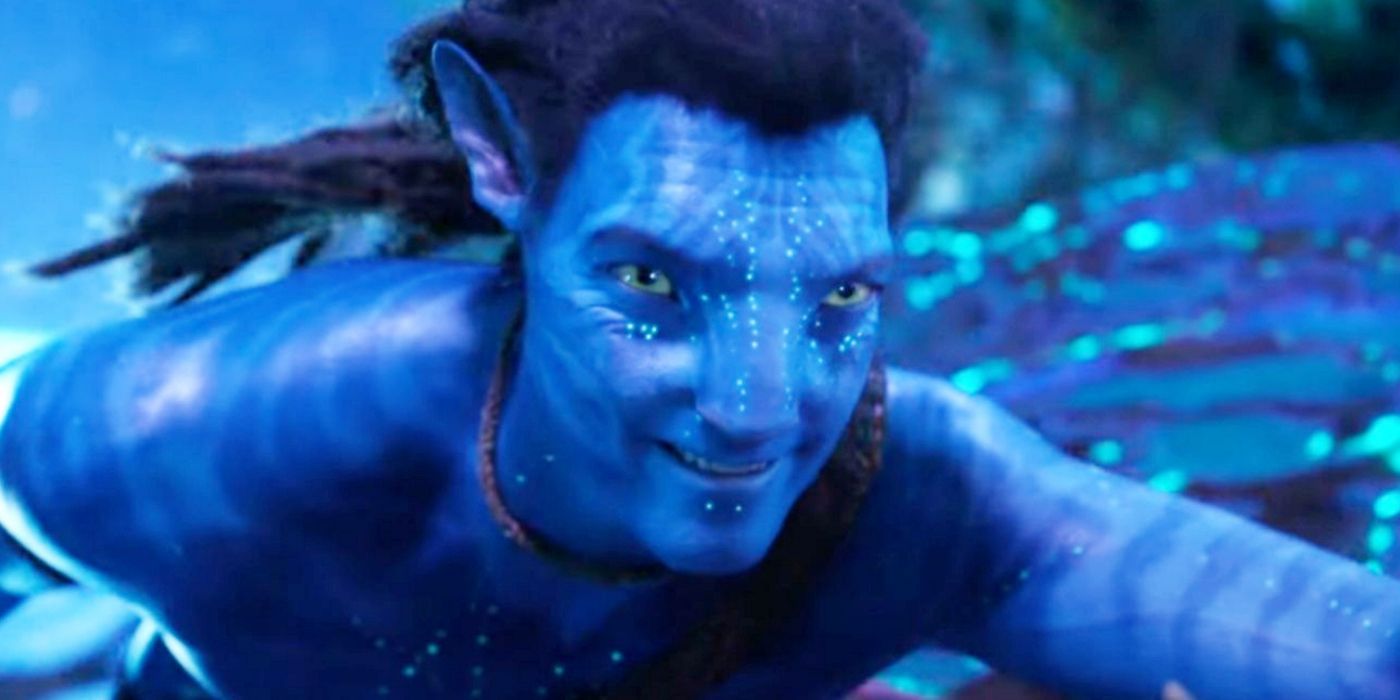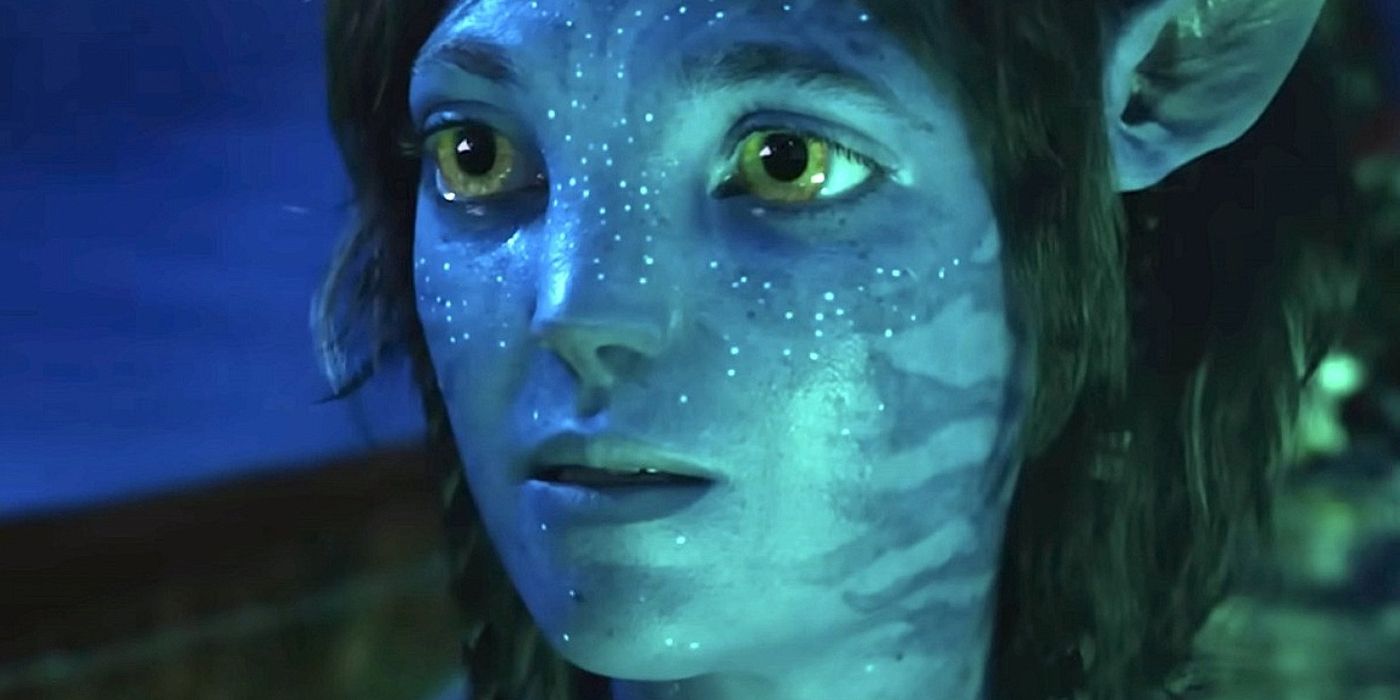James Cameron movies always push the boundaries of filmmaking technology, and one of the biggest way Avatar: The Way of Water does this is with its application of high frame rate (HFR) technology. While Cameron isn't the first director to use HFR for a big blockbuster movie, his use of the technique in the Avatar sequel is arguably the best yet and shows the true potential of both HFR and 3D.
Historically, most movies have been shot at 24fps, meaning each second of footage is essentially comprised of 24 separate still images. A 24fps standard is largely a product of the use of film prior to more things being shot digitally, and at that time, cheaper television was shot on video, which was cheaper and had a higher frame rate, creating a subconscious association between higher frame rates and cheap television referred to as the "soap opera effect." Despite the association, the technology still has massive potential in big-budget blockbuster filmmaking such as Avatar: The Way of Water.
How HFR Makes Avatar: The Way Of Water Look Like A Video Game
While the HFR look has historically been associated with the soap opera effect and "motion smoothing" on televisions is regularly demonized by filmmakers, higher frame rates are actually highly valued in video games. In gaming, 60fps, or sometimes even higher, is desirable for both visual and competitive reasons, so the HFR look is often associated with video games just as much (if not more) than soap operas.
One of the criticisms against Avatar: The Way of Water is that a lot of it looks like a video game, and more than likely Cameron's use of HFR is the reason for that comparison. While most live-action movies utilizing 48fps may be seen as looking more like a soap opera, Avatar: The Way of Water being a big CGI action spectacle would naturally have more subconscious associations to a 60fps video game. Avatar: The Way of Water usually switches back and forth between 24fps for slower dialogue compared to faster-paced action scenes, minimizing the impact, but it's still a common observation for many critics and audience members.
Is Seeing Avatar: The Way Of Water In HFR A Better Experience?
Since Avatar: The Way of Water's use of high frame rate is negatively associated with video games and soap operas, would the movie have been better off if the whole thing were presented in 24fps? Ultimately, all movie-going experiences are subjective, but Cameron has a reason for utilizing HFR the way he does in Avatar: The Way of Water, and the trade-off could massively improve the look of the movie.
There's been a few popular 3D movies over the years, but 3D can create constraints on what looks good on screen. 3D glasses filter light, so 3D movies need to be extra bright and high-contrast to avoid looking too muddy, which is particularly a problem for big CGI that can struggle to look as good under bright conditions. Additionally, fast-paced action and quick camera moves don't work well in 3D due to the level of motion blur associated with 24fps. Using 48fps fixes many of these issues by increasing clarity and smoothness of motion in darker, more frenetic conditions, giving James Cameron the tools he needs to craft a far more dynamic action-packed 3rd act.
Why Avatar: The Way Of Water's High Frame Rate Is So Controversial
One of the biggest problems with the use of high frame rates is the association with video games and soap operas. James Cameron isn't the first director to play with HFR on a 3D movie. Peter Jackson's Hobbit trilogy and Ang Lee's Gemini Man are two notable examples of movies that were largely criticized for how HFR made them look cheaper. While there's certainly a different look to higher frame rates, there's nothing inherently "cheaper" about it other than association with video games and soap operas.
This doesn't necessarily mean anyone bothered by the look of Avatar: The Way of Water should simply get over it, as, HFR, like any technology, could always be improved or better implemented, but, but it could also take a little getting used to from audiences. Unless there's some other massive breakthrough in 3D to reduce motion blur, use of HFR is going to be the best way to make 3D spectacles look better, and Cameron's choice to alternate between 24fps and 48fps may be the closest to a "best of both worlds" situation available with modern technology.
Will Avatar: The Way Of Water Do For HFR What Avatar 1 Did For 3D?
3D movies have been around for decades, but it wasn't until Avatar that a 3D blockbuster was such a big hit at the box office. After Avatar, 3D surged in popularity, partially because audiences wanted more of the immersive visual experience, but also because theaters and studios were big fans of the marked-up prices for 3D tickets. Unfortunately, while the use of 3D became more common, filmmakers weren't optimizing their movies for 3D from conception the way Cameron did with Avatar, so other than a few exceptions such as Ang Lee's Life of Pi, audiences gradually came to see 3D as an overpriced gimmick.
If Avatar: The Way of Water is anywhere near as successful as the first movie, Cameron will have proven that Avatar's success wasn't a fluke because the 3D gimmick as some of the movie's critics have retroactively claimed. This is an important lesson as theaters are struggling to fill seats in a post-COVID environment, especially when ticket sales were already declining for decades. The same lesson was proved by Top Gun Maverick: making movies that benefit from the big screen experience will convince audiences to see them on the big screen.
3D isn't seen as a gimmick because Avatar's box office was a fluke, it's seen as a gimmick because most of the movies that tried to capitalize on Avatar's success didn't learn to leverage the technology the way James Cameron does, meaning the 3D didn't look as good and didn't drastically change or improve the movie-going experience. By pushing 3D even further again with selective use of HFR, Cameron just might prove 3D movies are worth another look if the technology is taken seriously.








